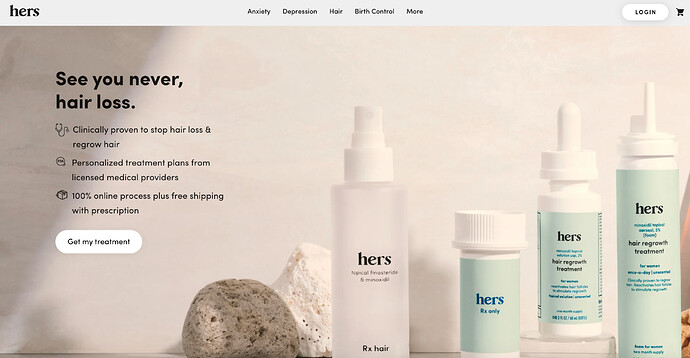If you take an analytical view of our current situation you will find that there are many trends that are worth noting. The first is the growth and expansion of tele"health" companies aggressively marketing hair loss solutions.
I recently downloaded and read the February 2023 Investor Relations presentation from Hims and it contains some fascinating insights. They are experiencing 110% compounded annual growth and have increased their subscriber base from 130,000 in 2018 to 1,000,000 in 2022. They estimate that the market for dermatological products (primarily hair loss drugs) in the United States is in the region of 80,000,000 consumers.
They write: “We continue to unlock growth in our immediate markets and are primed to capture future, underpenetrated opportunities.” They go on to estimate that as much as 90% of the applicable population is yet to seek treatment for some conditions.
What’s interesting, is triangulating this information with a statement from the PFS Foundation in 2020: “We get an average of 45 new PFS patients a month banging on our digital door from across the globe, up 462% since 2018… An ever-growing number of these patients inform us that they were prescribed finasteride, virtually, by Hims, Keeps or Roman. And virtually without warning of PFS.”
We can see their strategy of aggressively tapping into new markets by simply visiting the Hers website and observing that they are aggressively pushing finasteride & minoxidil solutions on menopausal women.
Replete with swanky imagery and catchy phrases they are specifically targeting a demographic for whom these solutions aren’t even FDA approved.This trend is by no means limited to the U.S. In South Korea, my country of residence, the pharma giant Boryung will launch Finjuye, a finasteride spray, which can easily be ordered online without having to visit a doctor.
Also of note is the trend of “health influencers”. A recent study conducted by researchers at the University of Colorado found that a majority of social media content related to hairloss solutions was being generated by so-called “influencers” with no medical background whatsoever. These affiliate marketers make a healthy commission for each new subscription and have no incentive to be truthful or cautious about the wellbeing of their audience.
We need to ensure that as our disease grows we are ready to support newcomers and give them a clear agenda for helping to liberate us all from this nightmare. We need to systematically push back against charlatans and gurus who would subvert our progress by offering false solutions. If we effectively harness the potential for grassroots mobilisation I am confident we can dramatically change the status quo. Sufferers entering our community need to understand there is currently no viable treatment, but through their effort they can be a part of a legitimate movement to uncover the mechanisms behind this disease and resolve the situation.

